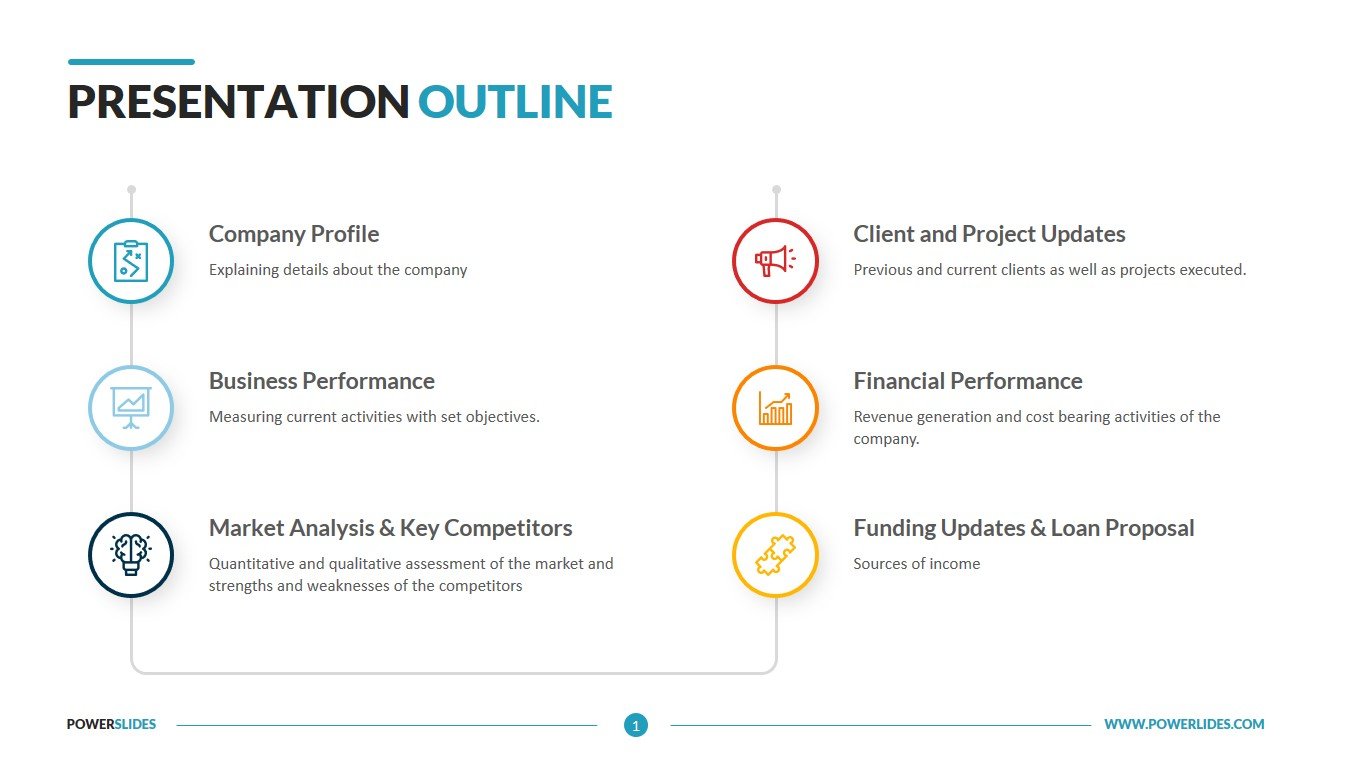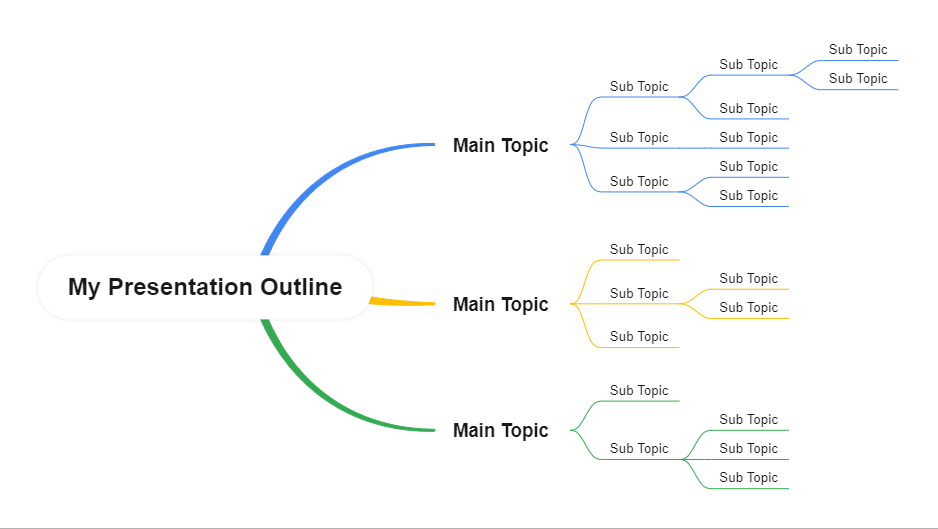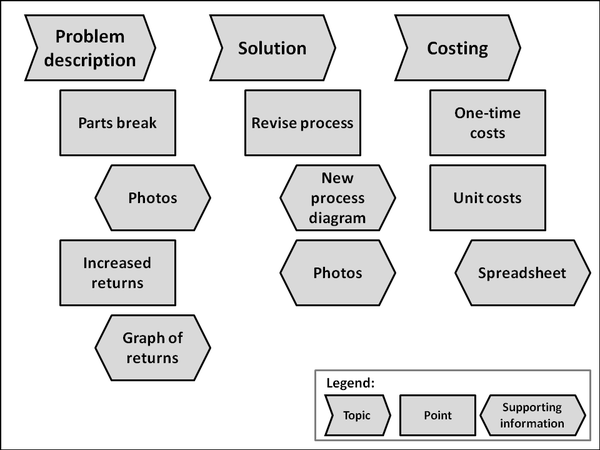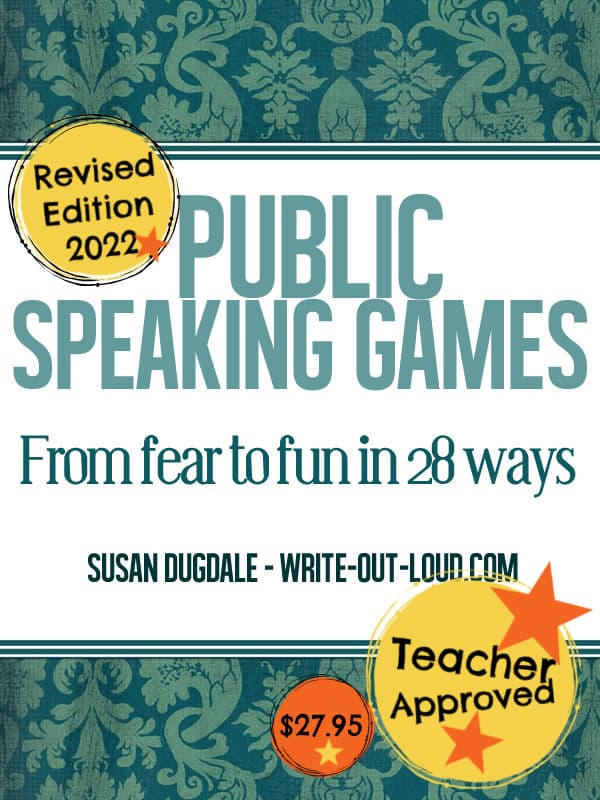How to Outline a Presentation? Expert Tips & Techniques
Imagine you’re standing in front of an eager audience, ready to captivate their minds and leave a lasting impression. But there’s a catch—you need a solid presentation outline to guide you to success.
Crafting the perfect presentation outline might seem daunting, but it’s your secret weapon for delivering a powerful message with confidence. Have you ever wondered how some presenters effortlessly engage their audience while others struggle to make an impact? The key lies in the outline.
By the end of this article, you’ll discover how to structure your thoughts effectively, keep your audience on the edge of their seats, and boost your presentation skills to new heights. Are you ready to master the art of outlining a presentation? Let’s dive in and unlock the secrets to success.

Credit: www.typecalendar.com
Purpose And Audience
Crafting a presentation outline involves understanding its purpose and audience. Determine the main goal, whether to inform, persuade, or entertain. Identify who will be listening. Tailor the content to meet their interests and level of understanding.
Crafting an effective presentation begins with understanding its purpose and audience. Knowing why you are presenting and to whom can shape everything from your tone to the content you include. This clarity sets the foundation for a compelling and meaningful presentation. ###Identify Presentation Goals
Before you begin outlining, ask yourself: What do you want to achieve with this presentation? Are you aiming to inform, persuade, or entertain? Clear goals drive the structure and flow of your presentation. Consider a time when you attended a presentation that left you confused or uninterested. Likely, the speaker lacked a clear objective. Avoid this pitfall by defining your goals early. ###Understand Audience Needs
Your audience’s needs and interests are crucial. Who are they, and what are their expectations? Tailoring your presentation to meet these needs increases engagement and effectiveness. Imagine presenting complex data to a group of high school students. You’d likely simplify your language and use visuals. This understanding ensures your audience stays connected and informed. Interact with your audience. Pose questions or invite feedback. This not only keeps them engaged but also provides insight into their needs. Is there something specific they are hoping to learn or understand? Addressing these questions can transform your presentation from ordinary to impactful. Aligning your presentation goals with your audience’s needs creates a powerful synergy. This thoughtful alignment not only enhances your presentation but also ensures it resonates with your audience. Are you addressing the right audience with the right message? This is the core question to keep in mind as you outline your presentation.Structure And Flow
Creating a presentation outline requires careful attention to structure and flow. A well-organized presentation keeps your audience engaged and helps convey your message clearly. This section will guide you on how to arrange your presentation for maximum impact. Let’s explore the key components that contribute to a strong presentation outline.
Logical Sequence
Start with a logical sequence. Arrange your ideas in a way that makes sense. Begin with an introduction. Introduce your main topic and objectives. Then, move on to the body. Break down your main points into clear sections. This helps your audience follow your argument. End with a conclusion. Summarize your key points and provide a closing thought.
Organize your content chronologically or by importance. Consider what your audience needs to know first. This builds understanding as your presentation progresses. Ensure your ideas flow smoothly from one to the next. Transitions help maintain this flow.
Balanced Sections
Balance is key in your presentation. Each section should be roughly equal in length. Avoid sections that are too long or too short. This keeps your audience attentive and interested. When sections are balanced, it’s easier to maintain focus. Ensure each section provides value and supports your main message.
Consider using visual aids to maintain balance. Charts, images, and graphs can break up long blocks of text. They make complex information easier to digest. Visuals also add interest and variety. Keep your slides simple and uncluttered. This enhances understanding and retention.
Introduction Elements
Crafting a presentation outline involves organizing key points logically. Start with a clear introduction to grab attention. Include main topics and sub-points for clarity.
When crafting the introduction of your presentation, think of it as setting the stage for the story you are about to tell. This is your chance to grab attention and establish a solid foundation for the rest of your talk. A well-structured introduction not only engages your audience but also prepares them for the information you are about to share. Let’s dive into the essential elements of a compelling presentation introduction.Captivating Opening
Imagine you’re sitting in a room full of people, all waiting to hear what you have to say. The first few moments are crucial in capturing their attention. Begin with a question that sparks curiosity or a surprising fact that resonates with your audience’s interests. Once, I started a presentation by asking, “Did you know that nearly 70% of people fear public speaking more than death?” It instantly created a connection, as many nodded in agreement. This opening not only broke the ice but also set the tone for discussing effective communication strategies. Think about what will intrigue your audience. A captivating opening is your chance to make a memorable first impression. So, what will your opening be?Clear Thesis Statement
After grabbing attention, it’s vital to clarify the purpose of your presentation. Your thesis statement should convey the main message in a concise manner. This helps your audience understand what to expect and why it matters to them. Imagine outlining a presentation on climate change. Instead of diving into statistics immediately, you might say, “Today, we’ll explore how everyday choices can significantly impact our planet’s future.” This statement gives your audience a clear idea of the presentation’s focus and relevance. Make sure your thesis is straightforward and specific. A clear thesis acts as a roadmap for your audience, guiding them through the content. How will your thesis statement guide your listeners? By focusing on these introduction elements, you set the tone for an engaging and purposeful presentation. A captivating opening draws them in, while a clear thesis lays the groundwork for a meaningful dialogue.
Credit: powerslides.com
Main Content Development
Crafting the main content of your presentation is like laying the foundation of a house. It requires precision, clarity, and a focus on the essentials to ensure your message is delivered effectively. This is where the bulk of your information resides and where you engage your audience with your knowledge and insights. Let’s dive into two critical aspects of main content development: key points and supporting evidence.
Key Points
Your key points are the backbone of your presentation. They should be clear, concise, and directly related to your topic. Think about what you want your audience to remember. These points should be memorable and impactful.
To achieve this, jot down the main ideas that you believe are critical for your audience to understand. Use bullet points or numbered lists to keep them organized. This way, you ensure that your presentation flows logically.
Consider this: if you were the audience, what would you want to hear? Would it capture your attention and spark your interest? By focusing on these key points, you not only guide your listeners but also keep them engaged.
Supporting Evidence
Once you’ve established your key points, it’s crucial to back them up with supporting evidence. This could be facts, statistics, or real-life examples that reinforce your message. Evidence provides credibility to your presentation.
Imagine you’re presenting on the benefits of renewable energy. You could mention how solar power reduces electricity bills. But by adding statistics, like average savings per household, you make your argument stronger.
Ask yourself: what proof can I offer to convince my audience? By doing so, you not only enhance the reliability of your presentation but also build trust with your listeners.
Remember, the content of your presentation is what will leave a lasting impression on your audience. Make it count by carefully developing your main content with strong key points and supporting evidence. Are you ready to captivate and inspire?
Visual Aids
Visual aids can transform a mundane presentation into a captivating experience. They help illustrate your ideas, making your message clearer and more memorable. When used effectively, visual aids can engage your audience and enhance their understanding. But how do you ensure your visuals are as effective as possible?
Effective Slides
Slides should serve as your visual backbone. Each slide should emphasize key points rather than overload with information. Aim for clarity and simplicity. Avoid cramming too much text or data into one slide, as this can overwhelm your audience.
Think about the last presentation you attended. Did you find yourself straining to read tiny text or ignoring slides with too much detail? Balance is key. Use bullet points to break down complex information. Highlight crucial words or phrases to focus attention.
Consider your slide design. Consistent colors and fonts make your presentation look professional and cohesive. Choose a color scheme that aligns with your topic and brand. This consistency helps your audience follow along without distraction.
Complementing Graphics
Graphics should complement, not compete with, your message. Use images, charts, or graphs that directly relate to the content you’re discussing. They should enhance understanding, not create confusion.
Imagine you’re presenting sales data. A well-designed graph can convey trends at a glance, saving time and making your point more effectively. But a cluttered chart with too many details can leave your audience puzzled.
Think about how graphics can support your narrative. Are your images reinforcing your message or merely filling space? Choose visuals that add value to your presentation. Ask yourself, does this graphic help explain my point or distract from it?
Engage your audience by asking them questions about the visuals. Encourage them to interpret what they see. This not only keeps them involved but also reinforces your message.
Using visual aids effectively can elevate your presentation from good to great. Keep your visuals clear, relevant, and supportive of your message. What visual strategy will you try next to make your presentation unforgettable?

Credit: www.edrawmind.com
Engagement Techniques
Crafting a presentation outline involves understanding your audience and defining your main message. Break down content into clear sections, using bullet points for clarity. Keep slides simple to enhance engagement.
Delivering a presentation that captivates and engages your audience is no small feat. The secret to success lies in your engagement techniques. These strategies help maintain your audience’s attention and make your presentation memorable. But how can you ensure your audience stays with you from start to finish? Let’s delve into some effective engagement techniques that can transform your presentation from mundane to mesmerizing.Interactive Elements
Adding interactive elements to your presentation is a game-changer. These elements could be as simple as a poll or a live quiz. Tools like Slido or Kahoot! can help you integrate these into your presentation seamlessly. They provide instant feedback and keep the audience actively involved. Think back to a presentation where you were asked to participate in a poll. Didn’t it make you feel more connected to the content? By incorporating interactivity, you invite your audience to be part of the experience, rather than passive listeners.Audience Involvement
Engaging your audience goes beyond just speaking to them. You need to involve them. Ask open-ended questions that provoke thought and discussion. Encourage them to share their opinions or experiences related to your topic. Why not try a quick brainstorming session? This not only breaks the monotony but also brings fresh perspectives into the conversation. Remember, the more you involve your audience, the more invested they will become in your presentation. Effective engagement techniques are all about creating a dialogue. It’s about making your audience feel valued and heard. So, next time you’re outlining your presentation, think about how you can incorporate these strategies to ensure a dynamic and interactive experience. How will you make your presentation stand out and keep your audience on their toes?Conclusion Strategies
The conclusion of a presentation holds great importance. It ties everything together and leaves a lasting impression. Using effective conclusion strategies can help achieve this. Two important strategies include summarizing key points and delivering strong closing remarks.
Summarizing Key Points
Summarizing key points helps reinforce your message. It reminds the audience of the main ideas discussed. Highlight the most important details from your presentation. Use simple language for clarity. This summary helps your listeners remember the crucial parts.
Keep the summary short and concise. Avoid adding new information. This helps maintain focus and clarity. A strong summary ensures your audience leaves with a clear understanding.
Strong Closing Remarks
Closing remarks should be impactful. They serve as the final impression. Use powerful words to inspire or provoke thought. A memorable closing can motivate the audience to take action.
Consider ending with a call-to-action. Encourage your listeners to apply what they have learned. A quote or a thought-provoking question can also be effective. The goal is to make your conclusion resonate with the audience.
Practice And Feedback
Organizing ideas clearly enhances presentation effectiveness. Start with a strong introduction to grab attention. Use bullet points for easy understanding. Practice regularly and seek feedback to improve delivery. Adjust the outline based on audience reactions to ensure clarity and engagement.
Practicing your presentation and gathering feedback can significantly enhance your performance. Think of it as refining a masterpiece. It’s not just about knowing your content; it’s about delivering it effectively. Your goal is to resonate with your audience. This is where practice and feedback come into play.Rehearsal Importance
Rehearsing your presentation is crucial. It helps you internalize your content, making delivery smoother. You become more confident as you practice, reducing the likelihood of stumbling over words. A good way to rehearse is to present in front of a mirror or record yourself. This allows you to observe your body language and vocal tone. You might be surprised at the quirks you notice, like excessive hand gestures or filler words. Consider timing your rehearsals. It ensures you stay within the allotted time. You don’t want to rush through your slides or leave out important points.Incorporating Feedback
Feedback is your secret weapon. It offers an outside perspective, often highlighting aspects you might have overlooked. Constructive feedback can transform a good presentation into a great one. Invite a friend or colleague to watch your rehearsal. Ask them specific questions about what they understood and what was unclear. Their insights can guide you in refining your presentation. After receiving feedback, make necessary adjustments. This could involve clarifying complex points or modifying your pace. Remember, feedback is only valuable if you act on it. Practicing and seeking feedback could be the difference between a memorable presentation and a forgettable one. How will you incorporate these steps into your preparation?Frequently Asked Questions
What Are The Key Steps In Outlining A Presentation?
Begin with a clear objective. Structure your content logically, using an introduction, main points, and conclusion. Use bullet points for clarity. Include visual aids to enhance understanding. Ensure each section transitions smoothly to the next. Review and refine your outline for coherence and effectiveness.
How Can I Make My Presentation Outline Engaging?
Use storytelling techniques to captivate your audience. Incorporate interactive elements like questions or polls. Add visuals like charts or images. Keep language simple and relatable. Highlight key points with emphasis. Tailor content to your audience’s interests and needs. Practice delivery to maintain engagement throughout.
Why Is It Important To Outline A Presentation?
Outlining helps organize thoughts and ideas systematically. It ensures the presentation flows logically and coherently. It aids in identifying key points and supporting details. It improves delivery by providing a clear roadmap. It reduces stress and enhances confidence. Overall, it increases the effectiveness of the presentation.
How Do Visual Aids Enhance A Presentation Outline?
Visual aids clarify complex information quickly. They grab audience attention and maintain interest. They make the presentation more memorable. They support key points and reinforce understanding. They break down data into digestible formats. Use visuals strategically to complement verbal content and maximize impact.
Conclusion
Crafting an effective presentation outline is crucial. It guides your speech. Keeps you organized. Helps engage your audience. Start with a clear goal. Then, list main points. Use bullet points for clarity. Keep your slides simple. Practice your delivery. This builds confidence.
Remember, practice makes perfect. Adjust your outline if needed. Tailor it to your audience. Consider their needs and interests. This ensures relevance. Deliver your message clearly. Keep your audience engaged. A well-outlined presentation can make a lasting impact. Aim for simplicity and clarity.
Your audience will appreciate it.




